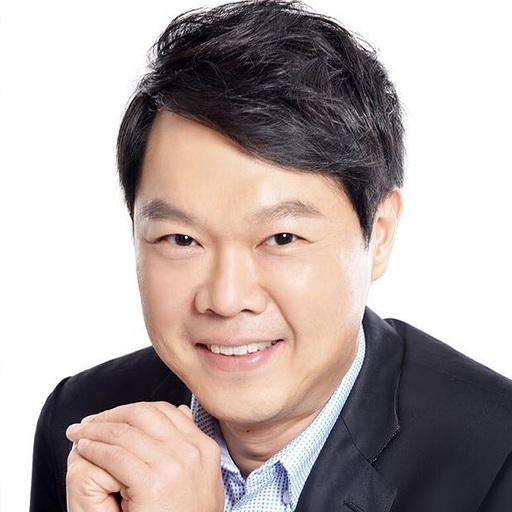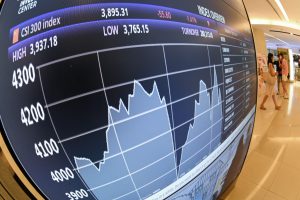SPONSORED CONTENT
From a major rebranding exercise to upheavals in the Asian markets throughout the year, it was busy 2021 for Finalto. Who would know better about this than Alex Yap, Head of Institutional Sales for Asia at Finalto? Today, we are in conversation with Alex about how last year treated the leading fintech company and what his expectations are for 2022, the Chinese Year of the Tiger.
How has 2021 treated you and Finalto?
In general, we’ve done pretty well this year, despite the spread of the Delta variant during the first half of 2021. Without the luxury of travelling and meeting clients face-to-face, we’ve had to adapt quickly to new ways to connect with our clients. Our strong customer relationships and Finalto’s branding helped us grow even during this difficult year. I think it has been a good test for all of us, teaching us to respond to changes with agility and innovation. At this point, we’re more equipped than ever to continue on our growth path.
A lot of business in Asia is done face to face, how has this changed during these times?
Yes, Asia is known for its love of in-person conversations, which meant that we used to travel extensively. But now we and our clients have had to adapt to the new normal, relying on online interactions. Even simple Zoom calls have helped us stay in touch with our clients. It has only been thanks to tech innovations that we were able to effortlessly continue our services.
When the pandemic began in 2020, a lot of our clients were not initially comfortable with a completely digital approach. But people are resilient, and they have become much more comfortable over time with the new way of communicating, which is completely online. I can safely say that the pandemic has transformed the industry in Asia.
The Asian markets went through a lot last year, with the raging Delta variant in the first half and the energy crisis in China in the second. What’s your take on the Asian markets in 2021?
Yes, it was an eventful and extremely busy year for us. The Delta variant brought massive volatility back to the financial markets. But after the volatility of 2020, the markets adjusted quickly and settled down much faster in 2021. In fact, there were several months of low volatility last year, unlike in 2020. Even the news of the Omicron variant led to only a couple of weeks of higher volatility, after which the markets seem to have taken this fresh spread of Covid-19 in its stride. On the whole, volatility was lower than in 2020 and did not last as long. The markets adapted quickly.
Again, if you see the downgrade of the Asian markets by the IMF, it was much better than in 2020. They cut their outlook for Asia by about 1% to 6.5% in October. With economies reopening, demand grew but supply constraints continued, with OPEC deciding to continue with its production restrictions. As a result contracts for natural gas for November delivery rose to $6.466/MMBtu on October 5, the highest since December 2008. Natural gas prices in Europe rose fivefold, while in Asia, they were up 1.5 times. WTI rose to $80/bbl by the end of the first week of October, its highest since November 2014, while Brent was at its highest since 2018.
Global energy prices have normalised since then and had little to do with the energy crisis in China. China is aiming at becoming carbon neutral by 2060 and has set a challenging carbon dioxide emissions peak target to be met by 2030. The nation has been investing significantly in renewable energy. Plus, it has immense nuclear power capabilities. However, although it is the world’s third-largest user of nuclear power, this energy source accounts for only 5% of its energy mix as of 2020. Compare this to the 70% in France. So, the energy crisis can be averted by raising nuclear power consumption.
Where does Finalto see itself in the financial markets of the Asia-Pacific region?
Asia is a very diverse market. Not only does the level of sophistication differ from country to country, the needs and preferences also vary significantly. But, Finalto is a very strong brand, with a revolutionary 360 suite or what we like to call a “solution in a box.” It is highly customisable, offering multi-asset capabilities to our clients. Despite our marketing not being too aggressive last year, we were able to garner clients through our flexible pay-as-you-go subscription model, with customised pricing and product delivery.
This is a solution we have tailored specifically to offer powerful features, that our clients in Asia have yet to fully discover. So, for 2022, it is key for us to communicate the advantages we offer. This includes a complete end-to-end platform, with front-end and back-office administration capabilities, robust trading and pricing tools and cutting-edge connectivity. With our pay-as-you-go model, clients can either choose the full suite or select from individual components to enhance their current capabilities.
For instance, ClearVision is a leading tech solution for institutional investors worldwide and is gaining popularity among proprietary trading firms and brokers focused on global growth. Its various components include the ClearPro trading platform for professional traders, the ClearWeb cloud-based trading platform, the ClearMobile mobile trading platform and FIX Connectivity for custom needs.
How are the needs of fintech firms and traders in Asia different from the other regions where you offer your services?
As I mentioned before, this is a very diversified market. The level of tech sophistication in the region ranges from novice to very advanced levels. So, Finalto 360 is the ideal tool to cater to such diverse needs. Fintech is still in its nascent stages in many parts of Asia and the sector is still trying to establish a strong footing.
Then we have the huge cultural and language differences. To serve clients from Singapore as efficiently as those from Thailand or Indonesia, we need to provide localised services. With a pan-Asian team, we understand the way they run their business across these different nations and what they need. We can offer services and support in the language they prefer through Finalto 360. This is where we have an edge in the market.
With Finalto 360, we offer our clients a turnkey trading system based on a set of 5 cutting-edge modules developed by highly experienced industry experts, which offers complete support and scales with the client’s business.
What are your predictions for the Asian financial markets for 2022?
The markets across Asia will see economic recovery through 2022, although the pace will differ across nations. South Asia is expected to grow at the fastest rate in the region, with East Asia coming in a close second. This could be due to the regulatory reset in China, which could impact the 2022 GDP.
The Hang Seng contracted about 17% in 2021, while most key indices in Asia saw positive growth. In fact, it is the only one that has been on a downward spiral through last year, reaching a low of 23,192.63 on December 17. But I won’t be surprised if it bounces back strongly in 2022, so investors should keep a close watch.
The People’s Bank of China is unlikely to revise its interest rate policy anytime soon. On the other hand, it set a significantly weaker-than-expected midpoint for the yuan exchange rate in early December. The central bank indicated that this was in response to the high levels of foreign exchange reserves. This move could lead to greater liquidity in the economy, which will need to find outlets. In which case, we might see more interest in the stock markets from investors, especially true of Hong Kong, which is a key financial centre in the region.
On the other hand, inflation is likely to continue to be a key challenge in Asia in 2022. With the economies in recovery mode, demand could well outstrip supply, which will drive inflation up. And this is against the backdrop of supply chain disruptions.
Central banks, including the US Fed, are unlikely to moderate their policy tightening any time soon, which will also put pressure on assets. Central banks in Asia will, therefore, be keeping their eye on the Fed. Core prices have remained fairly flat so far, but this could change depending on how the interest rates are revised. In fact, if the Fed makes a drastic shift in its stance, we could see a rise in volatility in the financial markets.
Given the current inflation scenario in the US, I believe the FOMC could decide to make 2, 3 or even 4 rate hikes through 2022. We are likely to see some hikes very soon and I won’t be surprised if we see larger than expected rise. So, investors should also keep an eye on the Fed’s decisions, since it would affect markets globally.
SPONSORED CONTENT
*The views expressed on Industry Announcements are not necessarily the views of Asia Financial.
*To contribute press releases, research or commentaries, please send an email to [email protected]





















